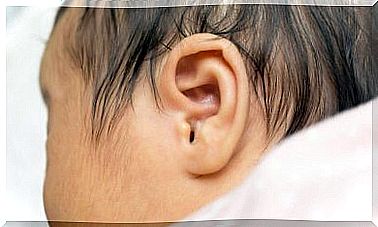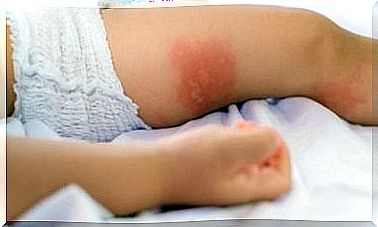Bioactive Peptides In Milk: What Do They Do?

Although most of us are aware of the nutritional value of milk proteins, not many of us know how great the functional value of bioactive peptides is. These are derived from milk proteins. In the last decade, however, researchers have begun to realize their biological significance. In this article we tell you more about them.
What are bioactive peptides?
To understand the origin of bioactive peptides, you can visualize each protein as a long freight train. In these imaginary trains, the carriages correspond to amino acids. In addition, there are 20 different types of carriages in this parable and each train can be almost any length or short. Thus, the number and combination of carriages in each protein is what makes each protein unique. In addition, the three-dimensional structure of the protein affects its function and activity.
According to the same parable, the body’s digestion would have the task of dismantling these freight trains. Peptides are the fragments that come from the cleavage of proteins. We should note that the activity of the peptides is based on their composition and inherent amino acid sequence.
How are bioactive peptides generated in milk?
That said, peptides are segments that are inactive (or encrypted) within the original protein. Digestion releases and activates the peptides so that they can perform various functions.

Bioactive peptides originate from milk proteins and can be produced by both the action of digestive enzymes and microbial enzymes in the intestinal flora. In this regard, it is very interesting that breast milk contains both components:
- Proteolytic enzymes. The most notable are pepsin, trypsin and chymotrypsin.
- A microbial component, which includes a set of lactobacillus bacteria.
The size of these active sequences can vary from two to 20 amino acid residues.
Where in the body do bioactive peptides act?
Some of the bioactive peptides are active directly in the gastrointestinal tract, but others act in the peripheral organs after being absorbed through the intestinal mucosa. In addition, researchers now know that it is possible for the same peptide to perform several different functions.
Functions of bioactive peptides in breast milk
The bioactive peptides that come from milk proteins perform a number of activities that affect the digestive organs, the endocrine and cardiovascular system as well as the immune and nervous system. More specifically, bioactive peptides have antimicrobial, antioxidant, antithrombotic, antihypertensive, immunomodulatory and opioid health benefits, among others.
Immunomodulatory effects
Breastfeeding transmits passive immunity through several factors, and gastrointestinal release of immunostimulatory peptides derived from serum proteins. For example, these peptides are released by cleavage by the enzyme trypsin:
- ß-casein derivative. Hexapeptides from amino acid residues 54-59 and tripeptides from residues 60-62.
- Alpha-lactalbumin derivatives. Tripeptide of amino acid residues 51-53.
These peptides stimulate the phagocytic activity of human macrophages and stimulate the oxidative activity performed by human granulocytes when fighting bacteria.
Antioxidant effect
Newborns, especially premature babies, are sensitive to oxidative stress. In addition, they are more susceptible to oxidative stress in diseases associated with premature birth. This is the case with necrotizing enterocolitis, chronic lung disease and retinopathy due to premature birth (ROP).
Breast milk contains many enzymatic and non-enzymatic antioxidants, such as superoxide dismutase, glutathione peroxidase, vitamin E, vitamin A and ß-carotene. In addition, the peptides generated from the digestion of milk proteins by the enzyme pepsin are powerful antioxidants:
- Derivatives of ß-casein. The peptide consisting of the seven amino acid residues 154-160, and the peptide consisting of the three amino acid residues 169-173.
- Derivatives of kappa casein. The peptide consisting of the six amino acid residues 31-36, and the peptide from the six amino acid residues 53-58.
The proposed antioxidant benefit of these peptides is mainly that they remove free radicals with amino acid structures in the tryptophan and tyrosine residues.
Opioid peptides
Breastfeeding mothers can often see their babies calm down and calm down after drinking milk. This effect comes mainly from the large amount of tryptophan, a precursor to serotonin, among the milk proteins.
However, opioid peptides derived from milk proteins also play a role in an infant’s sleep pattern. In addition, these peptides are likely to play a significant role in the development and function of the newborn’s gastrointestinal tract.
Opioid peptides act by activating or inhibiting opioid receptors in the central nervous system and in peripheral tissues. They have their effect in the gastrointestinal tract and also in the enteric nervous system.
So far, researchers have analyzed opioid peptides derived from β-casein and alpha-lactalbumin. They are called ß-casomorphins and alpha-lactorphins.
Opioid activity controls gastrointestinal function, in other words digestive capacity, electrolyte transport and fluid secretion. In addition, it regulates the development of the gastrointestinal tract, for example, and facilitates the production and secretion of mucin. In addition, these opioids have analgesic effects, induce sleep and promote stress management.
Antimicrobial peptides
Bioactive peptides with broad antimicrobial activity derived from the glycoprotein lactoferrin have been named lactoferricin, and these have an antiviral and antibacterial effect.









